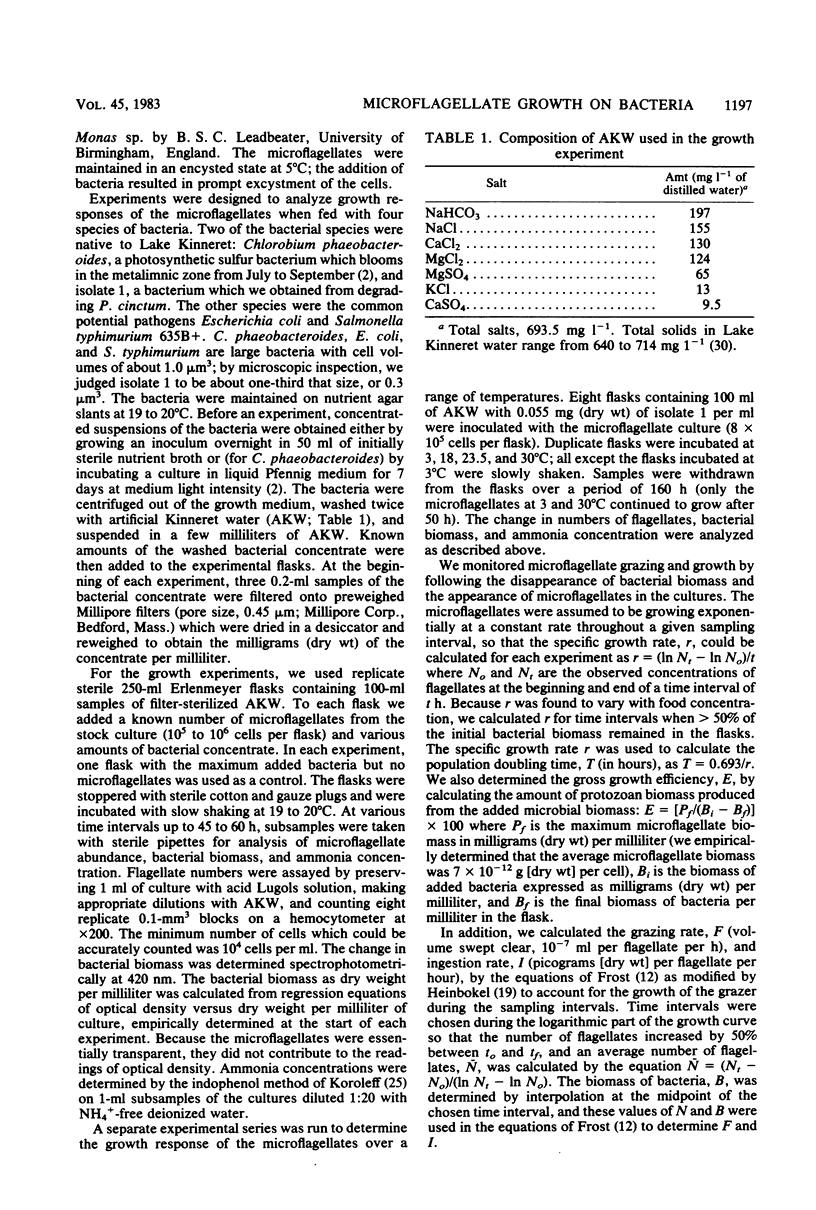Abstract
We studied aspects of the population growth of a microflagellate, Monas sp., isolated from Lake Kinneret, Israel. The protozoan growth rates, rates of ingestion of bacteria, and final population yields generally increased with increasing bacterial concentrations, although the exact relationship varied depending on the species of bacteria used as food. Grazing rates decreased hyperbolically with increasing food density. Gross growth efficiencies and ammonia excretion rates were similar over a range of food densities among the four species of bacteria. Population doubling times and ammonia excretion rates were lowest, and growth efficiencies were highest, at temperatures between 18 and 24°C. Under optimum conditions, the microflagellates had average population doubling times of 5.0 to 7.8 h, average growth efficiencies of 23.7 to 48.7%, and average ammonia excretion rates of 0.76 to 1.23 μmol of NH4+ per mg (dry wt) per h.
Full text
PDF





Selected References
These references are in PubMed. This may not be the complete list of references from this article.
- Bergstein T., Henis Y., Cavari B. Z. Investigations on the photosynthetic sulfur bacterium Chlorobium phaeobacteroides causing seasonal blooms in Lake Kinneret. Can J Microbiol. 1979 Sep;25(9):999–1007. doi: 10.1139/m79-154. [DOI] [PubMed] [Google Scholar]
- Payne W. J. Energy yields and growth of heterotrophs. Annu Rev Microbiol. 1970;24:17–52. doi: 10.1146/annurev.mi.24.100170.000313. [DOI] [PubMed] [Google Scholar]


